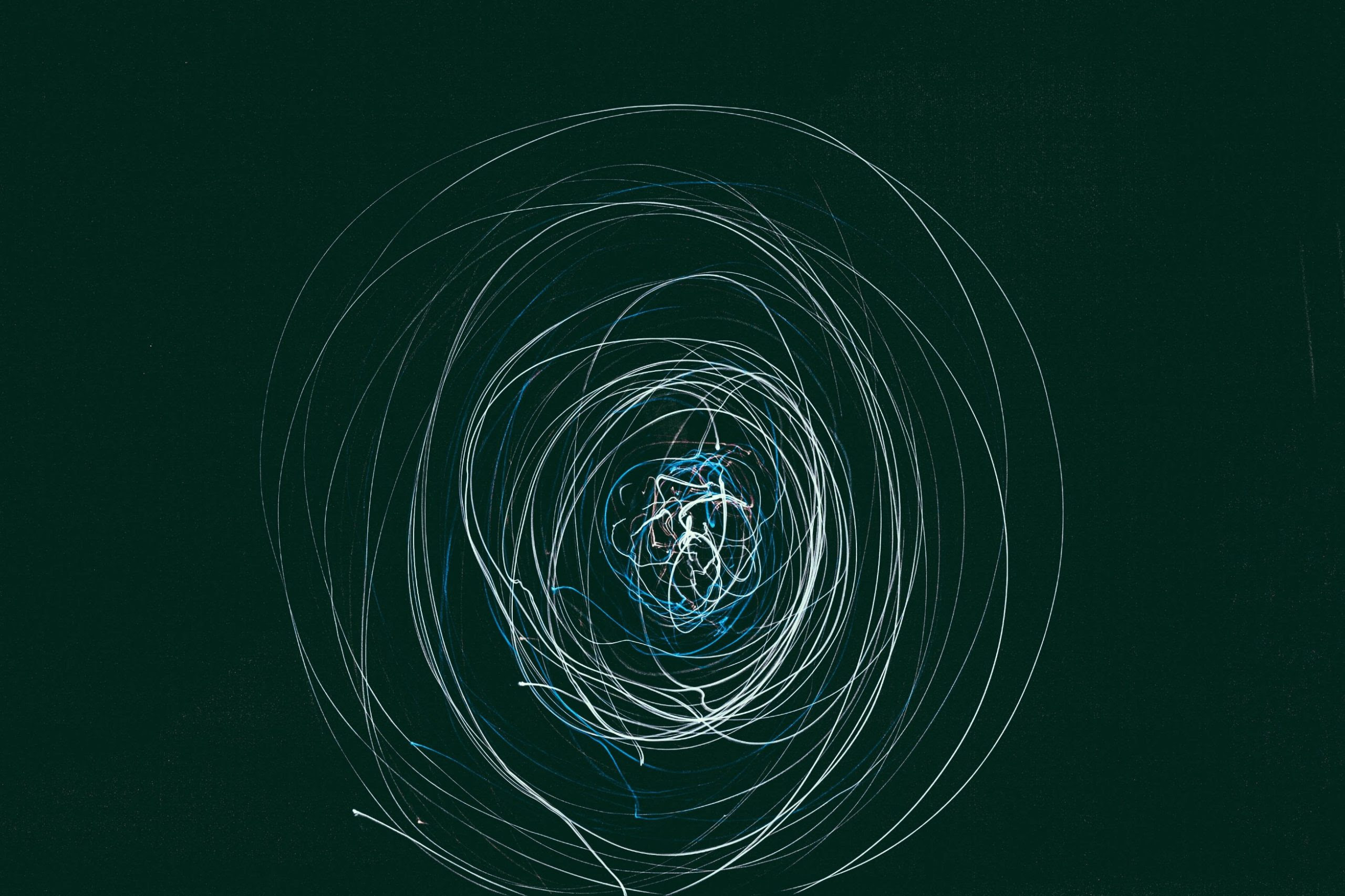
What is a Noumenon? Ask any (philosophy) person on the street, and you’ll no doubt hear how Kant divided the world into the phenomenon and noumenon, and that we can’t know anything about the noumenon, but have to resign ourselves to dealing with phenomenon, things in themselves vs appearances, etc etc.
But even in this dismissive simplification an inconsistency has already emerged. How could have Kant divided the world into two parts and then gone on, with a perfectly straight face, to deny that we could have any knowledge of the second part? Isn’t the very division itself, and the agnostic claim about unknowability, presenting us with knowledge of what is unknowable? That is, hasn’t Kant, at the outset, committed a self-referential contradiction that any philosophy undergrad could spot with a blindfold on: “I know that the noumenon is unknowable”.
The foolish thing would be to think that Kant has missed something so fundamental. So, we should, instead, suspect the simplified account. That turns us back to the original question, then, which is What is the Noumenon? It cannot be what Kant divides the world into in a simple way, the way we would divide a genus into species. All we have at our disposal is the phenomenon, so for the noumenon as a concept to avoid a simplistic self-referential paradox, it needs to be explicated in the terms of phenomenal reality. Obviously, owing to the definitional nature of the division, it is not a phenomenon, but the agnostic claim, and the division itself, need to emerge from phenomena. So, let’s do that.
Qualification
We would be sabotaged right out of the gate if we didn’t put to rest a very common way of talking about the noumenon that is, nonetheless, obviously flawed. That is the noumenon as cause of the phenomenon. Kant does toy with this idea, or manner of speaking, but never when it counts, that is, whenever he is discussing the problem of the noumenon directly. He can’t. Causality, as Schopenhauer points out, is a category only legitimately applicable to phenomenon by Kant’s own admission. Furthermore, once Kant has placed time and space on the side of the phenomenon, it becomes unclear what we mean by causality when it is applied beyond the context of space and, especially, time. It makes no sense, then, to speak of a supra-sensible causality beyond any possible phenomenon. Furthermore, because of the necessary agnosticism on the question, it makes as much sense to say the noumenon is the cause of the phenomenon as it does to say the noumenon is a dancing circus bear named Rodney. Though it would be nice and simple to define the noumenon just as “that which causes the phenomenon”, this would implode the entire Kantian enterprise. Accordingly, what Kant means by “noumenon” is far more complex, and subtle.
Groundwork
But first, let’s lay some groundwork. It’s important, as Kant seems so committed to the idea of the noumenon despite its perilous potential inconsistency, that we set up the background of how the Critique of Pure Reason births the idea alongside the machinery that forms the true focus of the text.
It could be said that Kant becomes committed to the idea of a noumenon in the opening sentences of the Critique of Pure Reason, when he’s first defining the faculties:
“The capacity (receptivity) to obtain representations through the way in which we are affected by objects is called sensibility.” (B33|A19)
So, even in the opening sentences we have an “object” that we are affected by, and our capacity to be affected is called sensibility. Intuition (the product of sensibility) is defined as that in our knowledge that refers to these objects “immediately” (ibid). It would seem the “object” has already been separated from our capacity to experience it. However, reading the inevitability of the noumenon into this opening does a certain retroactive violence to Kant’s mode of expression. The intuition of the sensibility refers immediately to objects of knowledge. Furthermore, though sensibility has been set up as a passive faculty (thus raising the question, passive to what?), our way of being affected, this does not, yet, entail an epistemic gulf between things in themselves and our being affected by them.
From there, the understanding is defined as the reserve of concepts that provide the form of our objects of knowledge, allowing them to relate to one another. So, to offer a simple example, allowing us to count disparate objects as belonging to a single quantity. There is nothing in my pure perception (intuition) of the various objects in front of me to suggest that they could be numerically identical (each being equal to one thing), however I can truly treat apples and oranges equivalently when I am counting fruit. How many “things” is this laptop in front of me? One? Three? Seventeen? Depends on the operation. The play of concepts allows me to see the laptop as a single unity one moment, and then as a complex amalgam of hardware components in the next, and finally onto a dizzying digit expressing the total number of atoms that make it up. My sensory experience of the object does not change through these conceptual shifts, only what the object represents to the conceptual notion of quantity. This conceptual notion of quantity is given ready-made in my perceptual experience, even though there is nothing perceptual about it. It is the conceptual component, the contribution of the understanding.
This is all to say that we can perform arithmetical operations easily on the objects in front of us because we experience objects through the concept of an object in general. The concept of an object in general is amenable to clean mathematical quantization, in a way the flux of multi-sensory perception isn’t. That’s why I can add a phone to a piece of ash and a stone and a power cable. They all partake in the concept of “object” generally, so I can perform arithmetic upon them as generic “objects”, despite them not sharing any more commonality than their being “objects, generally”.
Now, in the classical Kantian maneuver, it’s argued that we couldn’t derive the concept of an object in general from the particular objects appearing to us, because objects as they appear already presuppose an understanding of objects in general. I.e, we couldn’t learn math by counting things we see, because if we’re counting we’re already doing math, and if we were in a state where things appeared to us as uncountable (countability being completely unknown) it’s hard to see how we could learn counting from uncountable things. Thus, the concept of an object in general is given by the mind a priori and our intuitions (perceptions) fall into these demarcations.
Anecdotally, I remember drawing something as a child, and having the epiphany that objects didn’t actually have bold black outlines as they do in comic books. The fact that this was an epiphany points to the fact that there is something truthful in the “black outline” view of visual experience, despite it not being something in our visual experience. The concept of an object is this virtual outline, or what makes it possible, more or less.
Kant then wonders how it is this concept of an object in general could have arisen in such a way that it could apply to perception so ubiquitously. He represents it through the general formula “Object=X”. Now, it’s not enough we have this notion of Object=X, we need to be able to say how it is possible for the world as it is experienced to be so subject to it. In an awesome passage he derives the general concept of an Object=X out of the Cartesian Cogito. It will be instructive to our discussion of the noumenon to see how the proto-notion developed.

Object = X
Descartes puts forward “thinking” as a solid, absolutely certain given. To understand this it is important to remember that Descartes considered perception itself as a mode of thinking. In fact, Descartes definition of “thinking” in the 2nd Meditation encompasses all of the phenomenological “given” — perceiving, calculating, willing, feeling, refuting, reasoning and so on. All of these, taken in their pure aspects, just are, self evidently. This is what he meant by his definition of “thinking”; all that can be seen to self-presently just be. A moment’s reflection can show us why he needs this tautological definition (of thinking is being, being is —> thinking is): if he attempted to provide a determinate concept of thinking, which would define it more concretely, this would fail the very skeptic operation he was performing (one can always be wrong about/doubt the particular application of a determinate concept).
Anyway, Descartes jumps from this sureity of the present given to the sureity of the self to which this given is given. However, he cannot personalize this self (that would require predicating determinate concepts to it), only point to the given as given and refer the self to this process of the given being given.
Kant builds on this and takes this “I” of the Cartesian Cogito, calling it the “transcendental unity of apperception”. Basically, the content of my given experience is constantly shifting and changing. As I move around my house a myriad of forms and objects unfurl themselves, my thoughts move restlessly from this to that and my eyes dart around. However, all of this transformation is occurring within a unified “frame”. I can never directly find this frame itself but everywhere it is the same, hence transcendental. The unity within it is what provides the possibility for there to be unified particular objects in the first place. As in, when watching a film, we don’t see individual disjointed photographs, but in each viewer these successive images, by sharing a place, and moving regularly through an unfurling time, are unified. It’s that experience itself is unified spatially, from one moment to the next, that allows the content of a film to itself unify across successive times.
Now, consciousness itself might be disjointed and “gappy”, as Daniel Dennett has argued, for example, but it is presented first and foremost as a unity. This transcendental unity of apperception is the prototype for the concept of an object = X. So, the first object is the Cogito as the mere unity of experience, a frame, labelled “I”, and this is then the model of unity and objects in general. Within this general unity, all objects are given within a unity that they are powerless to contradict. Your shoes might not match your belt, but they are both being there together happily in this one experience. Once we’ve got this universal condition of unity, then each object of our experience takes part in this overarching, grand project of “unification”.
This unity, this object = X, with no determinate content (experience is always shifting), provides the ground of the conceptual matrix that not only partitions our sensible intuitions into stable objects, but allows them, via this matrix, to relate to each other in our experience, thus giving rise to the possibility of knowledge as the description of these conceptual relations within the matrix.
And, Noumenon?
We seem to be a far cry from the noumenon, but we’re only a single step away.
This object = X, the ground of objecthood in general, is what turns us to the noumenon in the first place. The TL:DR of the entire Critique of Pure Reason is that the only legitimate knowledge is that which takes place within this conceptual matrix at those points occupied by possible intuitions. In other words, you can think whatever you want, and follow through the logical implications of concepts as far as you wish, but if you want to make a claim to knowledge (an assertoric claim), this conceptual structure needs to be “fleshed” out with references to sensible intuition. I.e. “The math is sound, but the experiment must be conducted”.
However, these sensible intuitions alone are not sufficient to our knowledge about them: they are just a flux of impressions situated in the forms of space and time. There is always a conceptual excess over pure perception in every object. Even in our transcendental unity of apperception, there is an extra conceptual component added to the whole universe of possible perceptions: their unity. The concept, in its bearing on the perception, always has a +1.
This emboldens the understanding. For every object that it holds in view with its concepts, the intuitions of sensibility only color-in a portion of it; the concept is always a bit bigger than what is merely given in perception. So, there is necessarily a gap, or remainder, with every application of a concept. The name of this gap, or remainder, is “Noumenon”.
“Our understanding thus acquires a kind of negative extension, that is, it is not limited by sensibility, but, on the contrary, it limits sensibility, by calling things in themselves (not considered as appearances) noumena.” (B312|A256) (emphasis added)
The notion is exciting to the understanding, because it can freely play with concepts — remember how my laptop can be as many objects as a I need it to be for the purposes of thought? So, the understanding has the power to extract the gap and treat it as an object unto itself…
Kant militates against this. The understanding treating the gap as an object would be a positive notion of the noumenon: that is, as an actual object for non-sensible (i.e. intellectual) intuition. However, sensible intuition is the only one we have, so when the understanding takes this gap or remainder of conceptual content over what is given in experience, and attempts to think it as a object in itself, it thinks nothing. Kant, instead, warns that we can only think the noumenon in the negative sense, that is, as a gap, or remainder, or limit. We can’t then take this gap as anything positive, but have to leave it in this negative state — of merely being what escapes the positive presence of sensible intuition by definition. He even assigns it its place in his schema of “nothingness”. The noumenon is a conceptual form of nothingness, alongside its partner, contradiction, and opposite its siblings, the intuitions of emptiness and absence.
“the object of a concept to which no intuition can be found to correspond = nothing; this is, it is a concept without an object, as are the noumena, which cannot be counted among the possibilities, though they are not therefore claimed to be impossible either (ens rationis)” (B347|A290).
This not-possible but not thereby impossible is the character of the problematic, which is opposed to the apodictic (necessary), and the assertoric (permitting of being true or false). The noumenon is firmly in the realm of the problematic, Kant is very repetitive on this point, meaning he’s neither committed to the question of its necessity, or even the question of its existence. It is quite literally nothing at all.

The Problem of Solipsism
So far seemingly so good. We’ve followed Kant’s arguments through, and disentangled the self-referential paradox. It’s not the case that we can know that the noumenon is unknowable, because the noumenon is nothing at all, by definition. It is beyond the purview of possible thinghood, and is a conceptual illusion arising from the work of the understanding in general. This is satisfying until we remember that what we are talking about here is the real world! That is, the world beyond our experience of it. We’ve fallen into the worst kind of skeptical solipsism, where we have shown the notion of the “real world” beyond our individual sensual perception as illusory, and haven’t replaced it with anything.
Fortunately, even though Kant asserts that the noumenon only has a negative, problematic concept, within the sensibility it has a positive role. That is its role of limiting the sensibility.
“With all this the concept of a noumenon, if taken only problematically, remains not only admissible but, as a concept to limit the sphere of sensibility, indispensable.” (B311|A256)
But why does the sensibility need to be limited. We’ve already discussed how the understanding necessarily over-stretches sensible intuition, creating the gap called the noumenon, but there is a difference between over-stretching (a passive, indifferent relation) and limiting (an active relation).
We need to tread carefully here. The noumenon, as negative extension, can inhabit the realm of the “problematic” quite happily, but if we talk of this negative extension having positive effects, positive force, limiting the sensibility, we seem to be hypostatizing it into an object that could be the cause of a limit, an assertoric hypothesis. This compromises the safety of the problematic nature of the noumenon, and draws it into the network of things which also compromises its purely negative character.
Kant’s knife work around and through these issues is masterful, and worth quoting at length:
“We do not say that thought is in itself a product of the senses and therefore limited by them, but it does not follow that therefore thought, without the aid of sensibility, has it own pure use, since it would then be without an object. Nor would it be right to call the noumenon such an object of the pure understanding, for the noumenon signifies the problematic concept of an object for an intuition and an understanding totally different from our own, of an object, therefore, that is itself a problem. Hence the concept of the noumenon is not the concept of an object, but only a problem, inseparable from the limitation of our sensibility, as to whether there may not be objects entirely independent of the intuition of this sensibility. This is a question that can only be answered in an uncertain way, by saying that since sensible intuition does not embrace all things without distinction, there remains a place open for other and different objects, which therefore cannot be absolutely denied; but they also cannot be asserted as objects of our understanding, because there is no determinate concept for them (our categories are unfit for the purpose).” (B343–344|A287–288) (emphasis added).
Sensible intuition itself has a limitation, it does not embrace all things without distinction, and this limitation is inseparable from a problem, the concept of the noumenon, that refers to the possibility of objects beyond the sensible intuition. It’s important we get the directions right here: the problem that just is the concept of the noumenon (the noumenon is a problematic) cannot cause a limitation in the sensibility, the sensibility needs to find it in itself. However, the sensibility cannot think, only sense, so this limitation in it has to be sensed (intuited). Once it is discovered, it finds affinity with the gap or remainder of conceptual excess, this is the conceptual expression of the problem inherent to intuition.
Erich Adickes (1924) points to this situation and claims that in direct experience there is always a “breath of the transcendent”. That is, in our most direct experience, the sensibility always-already intuits something beyond itself, which is then conceptualized on the side of the understanding as the excessive topography of the concept of an object in general. Graham Bird (2006) instead points to the problem as it is phrased by Kant above, that the gap between the concept and the intuition always raises the question for sensibility that those “unintuited” elements of the concept could possibly be intuited by other possible cognitions. Bird sees Kant, with this entire noumenon endeavor, as merely leaving the door open to the possibility of radically different minds who may be able to intuit directly what we can only conceptually posit, that is, intuitions that could fill the gap between the edges of the concept and the intuitions that color them.
However, a synthesis of these two views is possible. What Adickes emphasizes is that the sensibility has to, with no thought of its own, intuit a limit, or incompleteness, in the pure given of sensation that turns it over to a beyond that it cannot intuit, only conceptualize via the understanding. Bird emphasizes that the sensibility humbles itself in admitting not being able to see it all, discovering a limit posed by the possibility of radically different ways of intuiting, that might be able to flesh out the gaps in the work of the understanding upon it.
The synthesis of these two views points us to the other. The beings we share our world with.
Let’s take sculpture as an example. Sculpture is perhaps a singular art form in that it’s a play of multiple spatial points of view occurring over time. I can unite the total piece of art, into the unity that it is, only by walking around it and connecting each successive perception into a series. However, such a unity is conceptual only — I can only have the empirical intuition (an intuition composed of sensation) of a single slice at any given time.
But, this is Florence, and that is David; there are many of us here as usual. Each of us, slowly orbiting the sculpture, using our cameras to record the slices relative to our position, intuit that we do not intuit what the other intuits. We know, conceptually, what the other sees, (we were just standing where they are now), but in order for us to combine the two sides of the sculpture into a single empirical intuition, the fabric of space and time would need to be altered, curved. This is impossible because space and time are the forms through which our intuition is given in the first place, not objects, or properties thereof, amenable to alteration. In order to intuit the entire sculpture, we would need to possess “an intuition and an understanding totally different from our own” (B343|A287), one that is not structured around these particular forms of space and time that our intuitions are structured around. With the two of us, standing on opposite sides of the structure, we both intuit the possibility of a unity of apperception beyond the horizon of this unity of apperception that is “I”.
Now, it’s not enough that I just see an other seeing the sculpture. I may happily believe this other lacking in interiority: a zombie or robot. If that was the case, the sensibility would encounter no limit, because the entire object that the robotic other is, through and through, would be the possible object of intuition. A macabre dissection would verify that inside of them are just more intuitions, nothing would escape the purview of sensibility. It’s only when I regard the other as other (that is, as another unity of apperception) that I acknowledge that beyond all possible perceptions I could have of this object that they are (this body and its inner mechanisms), there are inaccessible intuitions within this other, intuitions that my sensibility cannot gain access to, intuitions that occupy currently empty spaces in the gap between my concept of the object and this particular experience I am having of it right now. How does this arise as a problem for my sensibility? When the other speaks.

Noumenal Elephants
Perhaps simplifying the problem will make this more clear. Fortunately there’s a ready-made parable: the blind men and the elephant.
The story is something about a group of blind men groping a poor, silent elephant. Because each of them is groping a different part, they come to radically different conclusions about what it is they are groping. The one feeling the leg says it’s a tree, whereas the one feeling the trunk says its a snake, for example.
Now let’s give this story it’s proper Kantian weight. Being blind, the men’s entire faculty of sensible intuition (within the confines of the story) is limited to sensations of touch in the palms of their hands. This conveniently limits the zone of “perspective”; none of them can take in more than a literal handful of empirical intuition at a given time.
It is also important to make a distinction here: it’s not just that the one feeling the leg jumps to the wrong conclusion in believing he is touching a tree — the entire given of his sensory experience is congruent with the experience of feeling a tree. Yes, he is wrong in the conceptual sense, but what is more important is that while he is experiencing something in the region of “tree-like” thing, which could include the leg of an elephant as well as a tree, his partner is experiencing a “snake-like” thing. So, it’s not just that they disagree on a conceptual level about what to call this thing in front of them, what concept to subsume it under, but, rather, that they are having radically different intuitive experiences relative to where they are standing in relation to the thing. The one’s assertion that “it’s a snake” doesn’t just contradict the conceptual distinctions of the other, but their very fundamental sensory experience of what is happening before them. This is not “Is it a bird? Is it a plane?” but, rather, “Is it a glass of lemonade? Or is it the original cast of Les Miserables?”
Now, it is an important element of the story that these blind men are reporting their interpretations of the experience they are having — that’s the key that makes the story turn. Had they been deaf and mute in addition to being blind, there would nothing stopping one singular “unity of apperception” of one of them (say, the tree theory), from reigning supreme across an enclosed, solipsistic universe. But, as it is, the conflicting reports turn each of their individual intuitions into problems. The thinking “how could he believe this is a snake?” turns the tree-like intuitions into a problem. Suddenly, these intuitions that are perfectly congruent with a tree become non-all, they reach a limitation. What, in the deaf-mute-blind unity of apperception was just unproblematically a tree, suddenly becomes, with the impingement of another possible unity of apperception, an intuition limited by a problem. And that problem? The problem of there being another cluster of intuitions for this object of knowledge that are unintuitable by this sensibility in its formal rendering of space-time.
We only need to, now, step out of our omnipotent perspective from which we can see the blind man’s over-arching error, to assert that the elephant, the object, itself is nothing but a problem that exists between these conflicting intuitions, that arises through the encounter with an other via language.
So, tying all of this together, by way of conclusion, once we have others truly taken as others, intuition, the presentation of the sensory world rolling out before us, reveals itself to be non-all. The other, with their perspective and expressed view (language), poses a problem to it, instigating a limit. The name for this problem is noumenon: the possibility of another sensibility, of another cluster of intuitions showing that our own unity of apperception is merely partial. The partial nature of this unity is irrelevant to the conceptual matrix of the understanding that understands the object nevertheless, despite not being fully colored in by the intuitions of this particular sensibility (admitting of conceptual excess), such that I can tell you about things you are experiencing over the phone. This gap between, on the one hand, my intuitive experience, which, by the laws of space and time through which it is given, necessarily contradicts your intuitive experience (we cannot occupy the same point in space-time), and, on the other hand, the conceptual explication of the object that does not contradict your conceptual experience, is the noumenon. I’m given a consecutively transforming bundle of sensations, if I take you seriously as an other then I intuit that you are given another, but our concepts match up, despite my intuiting the “left half” and you the “right”. This problematic of intuition gives rise to the idea of the thing in itself, and the idea that if the forms of intuition were differently constituted then I could intuit both what I and you intuit at the same time. The name of this problem is “noumenon”, and it is not a possible fact (assertoric), nor a necessary form of my experience (apodictic) but a pure problem. This “real world” beyond all possible perception is nothing but the problem of mutually exclusive perspectives revealed by conversation.
It takes two to make a noumenon.
John C. Brady is a perennial student of philosophy and educator situated in Beijing. He gets most of his reading done in traffic jams. He is also a co-editor of this magazine, by way of full disclosure.




















Celá debata | RSS tejto debaty